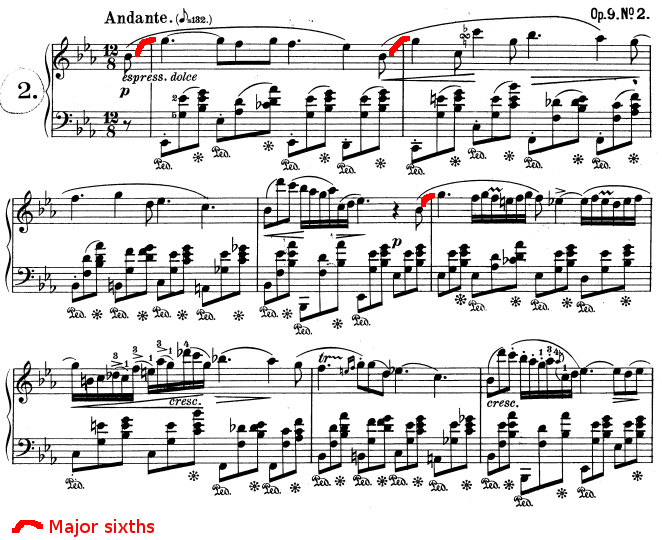In music theory, a major sixth is an interval that has nine half steps 

The major sixth requires that:
- The interval must be a sixth interval (six note names between the first and the last).
- The interval must have nine half steps.
What does a major sixth look like?
Here is an example of a melodic major sixth (two music notes in a melody) and a harmonic major sixth (in a chord):

How to recognize a major sixth?
Rule of music theory: All intervals in a major scale starting with the tonic (degree I) are either major or perfect, and only unison, octave, fourth and fifth are perfect (the others are major).
Example with the interval C/ A:
Let's take the C Major scale to have C as the tonic:

From the rule stated above, it becomes clear that C/ A is a major sixth.
Inversion of the major sixth
The inversion of the major sixth is the minor third.
Here is an example of a minor third:

Musical examples of major sixth
Nocturne Opus 9 n°2 by Chopin
Chopin's Nocturne Opus 9 n°2 start with a major sixth:

(Royalty free soun sample performed by pianist Samson François in 1964, Creative Commons Zero 1.0 license, source)
You will notice the use of gruppetto (measure 2), mordents (measure 5), trills (measure 7), appoggiaturas (measure 8), and the use of an anacrusis.
Interval identification game
You will find this interval in my Intervals identification game:


